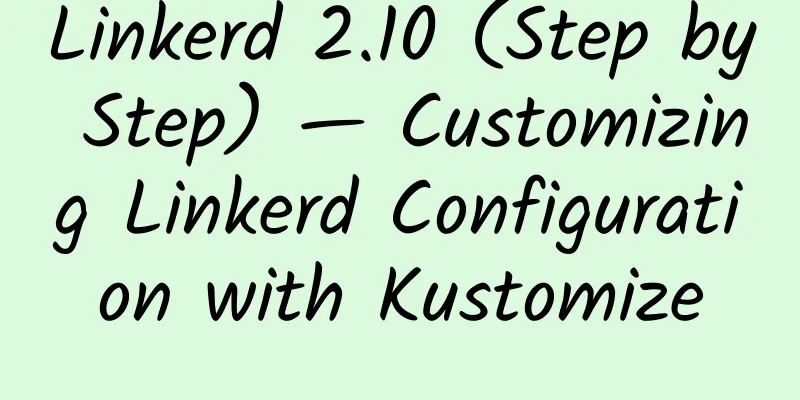Linkerd 2.10 (Step by Step) — Customizing Linkerd Configuration with Kustomize

|
The Linkerd 2.10 Chinese manual is being continuously revised and updated: https://linkerd.hacker-linner.com Kustomize can be used to patch the output of linkerd install in a consistent way, rather than forking the Linkerd installation and upgrade process. This allows installations to be customized to add installation-specific features. First, save the output of install into a YAML file. This will be the base resource that Kustomize will use to patch and generate content that is added to the cluster.
When upgrading, make sure to populate this file with the contents from linkerd upgrade . With the latest kustomize versions, this can be done automatically using the exec plugin. Next, create a kustomization.yaml file. This file will contain the instructions for Kustomize, listing the base resources and the transformations performed on those resources. Right now, this looks pretty empty:
Now, let's see how to do some example customizations. Kustomize allows any number of patches, transforms, and generators. These examples show one modification at a time, but you can make as many modifications as you want in a single kustomization.yaml file. Adding Priority ClassThere are several components in the control plane that can benefit from being associated with a critical PriorityClass. While this configuration is not currently supported as a flag to linkerd install, it is not difficult to add using Kustomize. First, create a file called priority-class.yaml, which will create a PriorityClass resource.
1000000000 is the maximum value. User defined priorities are allowed, adjust accordingly. Next, create a file called patch-priority-class.yaml which will contain the override. This override will explain what needs to be modified.
Then, add this as a strategy merge option to kustomization.yaml:
Applying this to your cluster requires taking the output of kustomize build and piping it to kubectl apply. For example, you could run:
Modify Grafana configurationInterested in enabling authentication for Grafana? You can do this with a one-time modification to the ConfigMap. Unfortunately, these changes will eventually be reverted every time a linkerd upgrade occurs. Instead, create a file called grafana.yaml and add your modifications:
Then, add this as a strategy merge option to kustomization.yaml:
Finally, apply it to your cluster by generating the YAML using kustomize build and piping the output to kubectl apply .
【Editor's recommendation】
|
>>: Why are operators competing to launch new 4G packages as 5G is the mainstream?
Recommend
How does CDN work? Do you know?
A content delivery network (CDN) is a set of serv...
2017 F5 makes applications fly!
[51CTO.com original article] In 2017, what will y...
Wireless charging is convenient, but how does it work?
In recent years, wireless charging has been widel...
Cloud, network and security integration builds the foundation for digital transformation
On September 27, the 2021 China International Inf...
Connecting new momentum, intelligent manufacturing wins the future: Huawei Intelligent Manufacturing Network Innovation Digital Summit 2022 was successfully held
On October 28, Huawei Intelligent Manufacturing N...
Platform extension ecosystem accompanies Huawei's China ICT Ecosystem Tour 2018 Highlights Halfway Review
[Original article from 51CTO.com] In the blink of...
If you unplug the SIM card, turn off the phone, and use a non-smartphone, the itinerary code will not know your whereabouts?
No matter you unplug the SIM card or turn off the...
Common network problem location tools that programmers should master
In the process of daily project operation and mai...
DogYun National Day promotion: 30% off on Elastic Cloud/20% off on Classic Cloud, 10 yuan free for every 100 yuan top-up, 100 yuan off for dedicated servers
The whole country celebrates together, and China ...
5G security has become a focus, but do you really need 5G?
[[339455]] The latest insights from the Economist...
Ministry of Industry and Information Technology: Three major areas to promote services suitable for the elderly
[[394583]] News on April 20: At the end of last y...
Urgent reminder: DediPath officially announced to run away
We have received the official announcement from D...
BGPTO: Japan/Singapore CN2 GIA server $64/month, E3-1230v3/16GB/480G SSD/10-100M bandwidth
It's been a while since I shared information ...
Discussion | Technical advantages of the top 9 leading SD-WAN providers abroad
SD-WAN technology helps make wide area networks m...
Many hands make light work, 5G bearer will gradually enter the mature stage
It has become an industry consensus that 5G will ...









